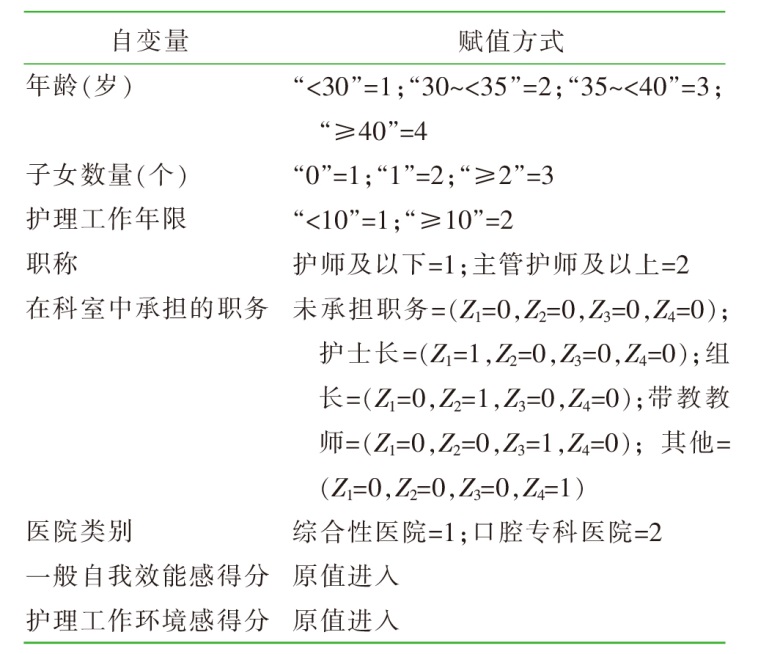| [1] |
国家卫生健康委. 全国护理事业发展规划(2021-2025年)[EB/OL]. (2022-04-29). https://www.gov.cn/gongbao/content/2022/content_5705846.htm.
|
| [2] |
Brown TC. Effectiveness of distal and proximal goals as transfer-of-training interventions:a field experiment[J]. Hum Resour Dev Q, 2005, 16(3):369-387.
|
| [3] |
PhD JF, Billington AQ. How much is transferred from training to the job? The 10% delusion as a catalyst for thinking about transfer[J]. Perform Improv Q, 2011, 24(2):7-24.
|
| [4] |
Lim DH, Morris ML. Influence of trainee characteristics,instructional satisfaction,and organizational climate on perceived learning and training transfer[J]. Hum Resour Dev Q, 2006, 17(1):85-115.
|
| [5] |
丁炎明, 吴欣娟, 肖艳艳, 等. 我国53 316名专科护士职业发展情况调查研究[J]. 中华护理杂志, 2020, 55(2):182-186.
doi: 10.3761/j.issn.0254-1769.2020.02.004
|
|
Ding YM, Wu XJ, Xiao YY, et al. Investigation on career development of 53 316 specialist nurses in China[J]. Chin J Nurs, 2020, 55(2):182-186.
|
| [6] |
白阳静, 白阳娟, 马芳. 云南省伤口造口专科护士培训成果转化影响因素分析[J]. 重庆医学, 2019, 48(13):2337-2340.
|
| [7] |
Schoeb G, Lafrenière-Carrier B, Lauzier M, et al. Measuring transfer of training:review and implications for future research[J]. Can J Adm Sci, 2021, 38(1):17-28.
|
| [8] |
王子豪, 李昕华, 郭赛男, 等. 基于社会认知理论的反馈式教育对全膝关节置换术后患者康复的影响[J]. 护理学杂志, 2024, 39(5):87-91.
|
|
Wang ZH, Li XH, Guo SN, et al. Effect of teach-back based on Social Cognitive Theory on recovery of patients after total knee arthroplasty[J]. J Nurs Sci, 2024, 39(5):87-91.
|
| [9] |
Albert B. Social foundations of thought and action:a social cognitive theory[M]. New Jersey: Prentice Hall,1986:37-38.
|
| [10] |
陈彬. 医学多因素分析设计样本例数估算:多因素分析设计样本例数综合估算法[J/OL]. 伤害医学(电子版), 2012, 1(4):58-60.
|
|
Chen B. Sample size methodology for multivariate analysis: synthetic estimate method for sample size in multivariate analysis[J/OL]. Inj Med Electron Ed, 2012, 1(4):58-60.
|
| [11] |
Kirkpatrick DL, Kirkpatrick JD. Evaluating training programs:the four levels[M]. San Francisco,CA: Berrett-Koehler Publishers, 2006.
|
| [12] |
Holton EF Ⅲ. Holton’s evaluation model:new evidence and construct elaborations[J]. Adv Dev Hum Resour, 2005, 7(1):37-54.
|
| [13] |
关华, 徐小陶. 健康管理专科护士培训迁移现状及影响因素分析[J]. 中国护理管理, 2024, 24(4):489-494.
|
|
Guan H, Xu XT. Current situation and influencing factors of training transfer among health management specialist nurses[J]. Chin Nurs Manag, 2024, 24(4):489-494.
|
| [14] |
于玲玲, 吴冰冰, 孙萌, 等. 母婴护理专科护士培训后培训迁移现状及影响因素分析[J]. 齐鲁护理杂志, 2024, 30(19):97-100.
|
| [15] |
杨名钫, 马芳. PICC技术规范化培训后迁移行为及其影响因素的纵向研究[J]. 护理学杂志, 2021, 36(5):59-61.
|
|
Yang MF, Ma F. Transfer of training after PICC standardized training and the influencing factors:a longitudinal study[J]. J Nurs Sci, 2021, 36(5):59-61.
|
| [16] |
Bai YJ, Li JP, Bai YJ, et al. Development and validation of a questionnaire to evaluate the factors influencing training transfer among nursing professionals[J]. BMC Health Serv Res, 2018, 18(1):107.
doi: 10.1186/s12913-018-2910-7
pmid: 29433487
|
| [17] |
王才康, 胡中锋, 刘勇. 一般自我效能感量表的信度和效度研究[J]. 应用心理学, 2001, 7(1):37-40.
|
|
Wang CK, Hu ZF, Liu Y. Evidences for reliability and validity of the Chinese version of General Self-Efficacy scale[J]. Chin J Appl Psychol, 2001, 7(1):37-40.
|
| [18] |
邵静, 叶志弘, 汤磊雯. 护理工作环境量表的研制及信效度研究[J]. 中华护理杂志, 2016, 51(2):142-147.
|
|
Shao J, Ye ZH, Tang LW. The development of Nursing Work Environment Scale and its reliability and validity[J]. Chin J Nurs, 2016, 51(2):142-147.
|
| [19] |
吕飞飞, 张艳. 卒中专科护士培训迁移的现状及影响因素分析[J]. 当代护士(上旬刊), 2022, 29(1):39-42.
|
| [20] |
Hanum AL, Hu QL, Wei W, et al. A longitudinal assessment of factors affecting training transfer among new clinical nurse specialists[J]. Int J Nurs Sci, 2024, 11(3):308-314.
|
| [21] |
Lin WQ, Zhang PP, Li SY, et al. Category characteristics and influencing factors of research competence among Chinese specialty nurses:a latent profile analysis[J]. J Adv Nurs, 2025.[Epub ahead of print].
|
| [22] |
Anton NE, Mizota T, Timsina LR, et al. Attentional selectivity,automaticity,and self-efficacy predict simulator-acquired skill transfer to the clinical environment[J]. Am J Surg, 2019, 217(2):266-271.
|
| [23] |
Quratulain S, Khan AK, Sabharwal M, et al. Effect of self-efficacy and instrumentality beliefs on training implementation behaviors:testing the moderating effect of organizational climate[J]. Rev Public Pers Adm, 2019, 41(2):0734371X1987667.
|
| [24] |
Molero Jurado MDM, Pérez-Fuentes MDC, Oropesa Ruiz NF, et al. Self-efficacy and emotional intelligence as predictors of perceived stress in nursing professionals[J]. Medicina, 2019, 55(6):237.
|
| [25] |
Thungjaroenkul P, Cummings GG, Tate K. Testing the social cognitive career theory in Thai nurses’ interest to become nurse educators:a structural equation modeling analysis[J]. Nurse Educ Today, 2016, 44:151-156.
|
| [26] |
营晓, 张海燕, 尚文涵, 等. 5家大型医院护士执业环境测评结果分析[J]. 中国护理管理, 2016, 16(7):873-878
|
|
Ying X, Zhang HY, Shang WH, et al. Nurses’ perceptions of professional practice environment:a cross-sectional study[J]. Chin Nurs Manag, 2016, 16(7):873-878.
|
| [27] |
Hughes AM, Zajac S, Woods AL, et al. The role of work environment in training sustainment:a meta-analysis[J]. Hum Factors, 2020, 62(1):166-183.
|
| [28] |
甘露, 李华, 李秀娥, 等. 北京某三甲口腔专科医院护士执业环境的调查研究[J]. 中华现代护理杂志, 2020(19):2526-2530.
|
|
Gan L, Li H, Li XE, et al. Investigation and research on working environment of nurses in a Class Ⅲ Grade A hospital of stomatology in Beijing[J]. Chin J Mod Nurs, 2020(19):2526-2530.
|
| [29] |
Huang XX, Wang LM, Dong X, et al. Effects of nursing work environment on work-related outcomes among psychiatric nurses:a mediating model[J]. J Psychiatr Ment Health Nurs, 2021, 28(2):186-196.
|
| [30] |
Li H, Xu YL, Jing MJ, et al. The mediating effects of adversity quotient and self-efficacy on ICU nurses’ organizational climate and work engagement[J]. J Nurs Manag, 2022, 30(7):3322-3329.
|




